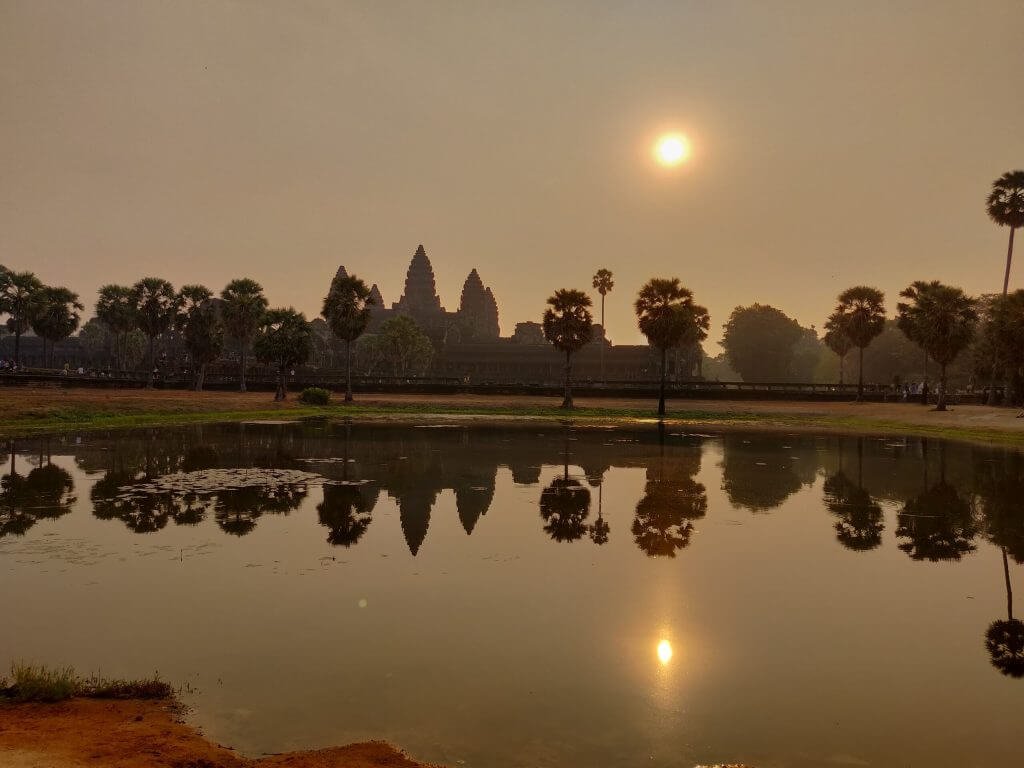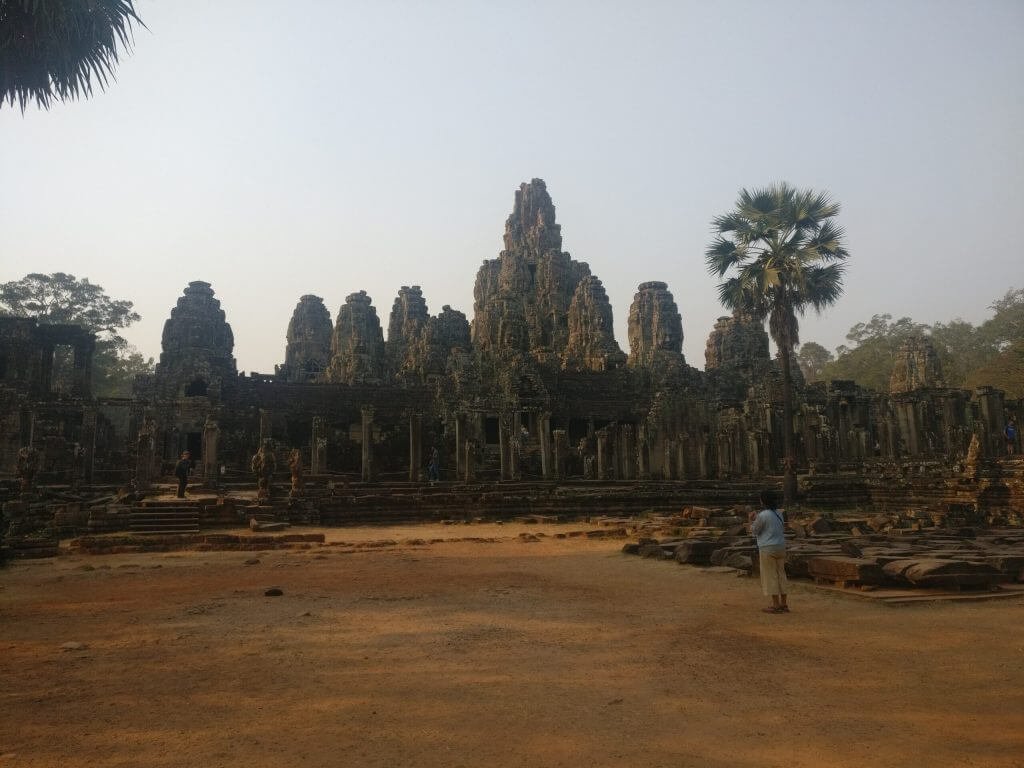Angkor Wat – A Colossal Miracle

Ranakpur Jain Temple: The beautiful pilgrimage hidden in Rajasthan
February 28, 2021Angkor Wat is a magnificent temple complex located in Siem Reap, Cambodia’s northern province. It is a UNESCO World Heritage Site and one of the world’s largest religious structures, attracting millions of visitors each year. Angkor Wat is the crown gem of the Khmer Empire, which dominated most of Southeast Asia between the ninth and fifteenth centuries. Angkor Wat is a magnificent example of Khmer architecture, which is distinguished by symmetry, elaborate carvings, and the use of sandstone as a building material. The temple complex is around 162 hectares in size and contains various buildings, canals, and reservoirs. The principal temple is ringed by a more than 5-kilometer-long moat.
Angkor Wat – A Majestic Site
Angkor Wat’s construction began in the early 12th century, under the reign of King Suryavarman II. The temple complex was originally erected to honor the Hindu god Vishnu, but it was later changed to a Buddhist shrine. It took more than 30 years to build, and it is estimated that more than 5 million tonnes of sandstone were utilized in its construction.
The beautiful carvings that decorate the temple’s walls and ceilings are one of its most striking characteristics. These carvings reflect episodes from Hindu mythology as well as Khmer Empire historical events. The carvings are so detailed that they even reflect scenes from ordinary life, such as farming and fishing.

The central tower, which stands over 65 meters tall, is another prominent element of Angkor Wat. This tower is encircled by four lesser towers that depict Mount Meru, a revered mountain in Hindu mythology. The towers are similarly ornately carved, and the central tower houses a colossal statue of the god Vishnu. Angkor Wat is made up of several buildings, including libraries, galleries, and subsidiary temples, in addition to the central temple. The Bayon Temple, located in the heart of Angkor Thom, the historic capital of the Khmer Empire, is one of the most spectacular of these structures. The Bayon Temple is famous for its multiple towers, each of which is adorned with over 200 carved faces.
Despite its magnitude and splendor, Angkor Wat was mostly abandoned by the 15th century when the Khmer Empire fell and was eventually superseded by other Southeast Asian nations. The French found the temple complex in the late 1800s, and it has since become a significant tourist attraction.



Visiting Angkor Wat is a once-in-a-lifetime opportunity for anyone interested in history or architecture. The temple complex is open all year, but it is better to go during the dry season, which lasts from November to February. Visitors should also plan on spending several days viewing the complex because there is simply too much to see in one day. Hiring a guide or joining a tour group is the ideal method to experience Angkor Wat. A professional guide will be able to give you with information about the Khmer Empire’s history and culture, as well as point out some of the temple complex’s more hidden and lesser-known regions. Visitors should also carry plenty of water and sunscreen because the heat and humidity can be extreme.
Visitors to Angkor Wat can enjoy a number of additional activities in the surrounding area in addition to touring the temple complex. Siem Reap is a vibrant city with a diverse range of restaurants, shops, and other attractions. Visitors can also take a boat trip to Tonle Sap Lake, one of Southeast Asia’s largest freshwater lakes, or visit one of the many adjacent villages to learn about the local culture and way of life.

Another favorite pastime at Angkor Wat is to observe the dawn or sunset. The temple complex is open from 5 a.m. to 6 p.m., and visitors can tour the site with a one-day or multi-day permit. Many visitors choose to get up early to witness the stunning sunrise over the temple. Sunset viewing is also popular, as the temple is attractively illuminated in the evening. When visiting Angkor Wat, one of the most important things to remember is to respect the local culture and traditions. This includes wearing appropriately, remaining calm and respectful within the temple, and refraining from climbing on any of the structures. Visitors should also be careful of their environmental impact and avoid littering or harming the local flora and fauna.

Concerns have been raised in recent years concerning the influence of tourism on Angkor Wat and the surrounding area. Overcrowding, damage to the temple complex, and exploitation of local populations have all resulted from the large number of visitors. In response to these concerns, the Cambodian government has put in place several measures to restrict tourism in the area, such as limiting the number of tourists and imposing stricter standards on behavior and dress.
Despite these obstacles, Angkor Wat remains an important cultural and historical site, as well as a tribute to the Khmer Empire’s resourcefulness and innovation. Its breathtaking beauty and architecture continue to enchant people from all over the world, and it is expected to remain a popular tourist destination for many years to come.


Angkor Wat is a genuinely spectacular and awe-inspiring temple complex that provides visitors with a unique glimpse into the Khmer Empire’s history and culture. Its massive size, exquisite carvings, and breathtaking architecture make it one of Southeast Asia’s most important historical sites, and a must-see for anybody interested in history, culture, or architecture. While there are difficulties related to tourism in the area, it is feasible to visit Angkor Wat ethically and respectfully and to experience its beauty and majesty in a meaningful and sustainable manner.
Read our other blog on exploring the party capital of Cambodia – Siem Reap.
To purchase tickets for Angkor Wat, visit their official website Angkor Enterprise.




